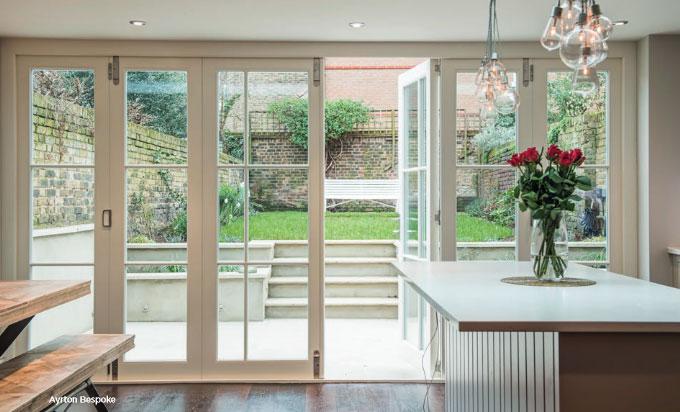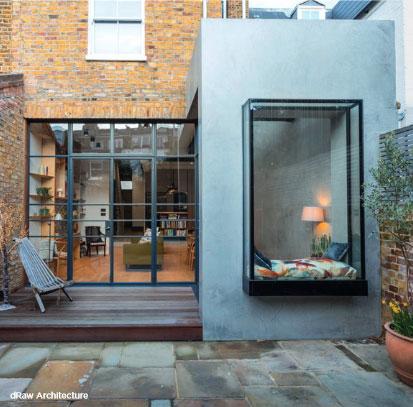Menu

START WITH THE BASICS
Insulation
Start with getting professional advice to avoid expensive mistakes. The government has a list of domestic energy assessors (www.epcregister.com/searchAssessor) who assess and advise you on your insulation options – the assessment and certificate costs between £35-£120 including VAT.
Invest in good quality windows to stop heat escaping, namely triple glazing. If you aren’t replacing windows, use a foam or tape for a budget-friendly solution.
If you have solid walls and not cavity walls, heat will continue to escape. If you live in a mid-terrace Victorian house, you won’t be able to install external wall insulation but you can paint exterior walls with a transparent cream called Stormdry (www.safeguardeurope.com/products/stormdry-system/stormdry-masonry-protection-cream). Internally, insulating paints (www.rawlinspaints.com/thermal-paint), insulated plasterboard (www.insulationsuperstore.co.uk/browse/plasterboard.html) and thermal wallpaper (www.gowallpaper.co.uk/erfurt-mav-wallrock-thermal-liner) offer some accessible options and this area is developing.
If you’re able to investigate your original flooring, you may notice that heat is leaking out. Insulation here, such as Kingspan, will help keep heat in your home – rather than it heating the ground beneath your home. And finally, insulate your roof – around quarter of heat can be lost from the roof.
Smart controls
Their role is to learn how your house heats up and cools down, adjust heating according to the weather, and switch off your heating when you aren’t there. These work with almost all condensing and combi
boilers, and are also compatible with system and heat only boilers, as well as air source and ground source heat pumps.
“Heating and cooling systems allow for more accurate control and this helps with the environment as well as the current energy crisis that is shaping people’s minds,” says Thea Ingram of Stanza-ID.
Hive Thermostat Mini is one of the newest thermostats to offer access to more affordable, smart heating. It has all the same features as the original Hive Thermostat but it can also control up to six heating zones (the previous model could control three).
The majority of controls have moved on to a convenient app, which you can use to set up scheduling for hot water and heating, switch on frost protection and holiday mode, turn on geolocation (which means if you leave home without switching off your heating you’ll get an alert) and boost your heating and hot water.
If you like to control each room separately, you can add Hive thermostatic radiator valves, and the Thermostat Mini is compatible with Alexa, Google Assistant, Apple HomeKit, Siri Shortcuts and IFTTT.
If you have underfloor heating and want to control temperatures in different rooms, EvoHome is a good option, especially in larger houses where occupancy fluctuates. It’s more expensive than other options but it’s easy to set up and tweak the schedules when required.
Nest remains one of the most reliable and intuitive to use. It works off an app to control hot water, and while it doesn’t have the range of accessories that other options do, you can use smart TRVs to control radiators without the need to change your plumbing.

INVESTIGATE HEATING OPTIONS
Heat pumps
These systems draw in heat from outside and pump it into the house. According to Friends of the Earth, for every unit of electricity you use, it provides three units of heat. And yes, they work even when it’s very cold outside.
Hybrid heat pumps work alongside your gas boiler – a smart controller switches between the heat pump and gas boiler to use whichever is lowest carbon at the time. These are suitable for homes in conservation areas or very old properties. There are no grants available for these.
An air source heat pump extracts heat from the air outside (even if it is a cold day) and uses it to heat the water in your radiators and tank, but it won’t make your water as hot as a gas-fired boiler. From April 2022, a government grant for this, called a Renewable Heat Incentive, will be £5,000 upfront.
A ground source heat pump extracts heat from the ground (so you’ll need a garden), which is more expensive but also more efficient than an air source pump. There is a grant for this kind of heat pumpof about £6,000.
An air-to-air heat pump blows warm air into your house (as opposed to heating water in radiators), and are mainly suited to small homes, such as flats.
According to Thea Ingram of Stanza-ID, “Most common is installing air conditioning that heats as well and uses electricity instead of gas. The combination of this and solar panels is a great solution, selling back to the grid where possible.”
A cautionary note comes from MonikaBudjonova of Monche: “People are actively interested in heat source pumps. Sadly, the truth is that for most households a heat pump would be an expensive proposition, even with the government grant.”
RUNNING A TIGHT SHIP
• Be sure you know the location of all your shut-off valves – gas, water and electric
• Get your boiler serviced every year to avoid unnecessary breakdowns and costly repairs
• Test your carbon monoxide alarm every month without fail – so quick to do and vital for the safety of everybody under your roof
• Invest in the right boiler – A-rated boilers will save you money in the long-run
• Unplug all electricals such as chargers, televisions and laptops when not in use; leaving them plugged in still uses energy, even when not switched on. Unplugging could save up to £30 a year and every little helps, especially in these times when the cost of living is skyrocketing.Source: Northcote Plumbing & Electrical

Heat batteries
These store up heat for later use for instant hot water for showers and baths, for example, as well as radiators. If you plan ahead, you can use your heat pump when the price or carbon intensity is low, but have access to heat whenever you need it. It also means you can get rid of your hot water tank. They can be used with pumps, solar panels or charged with electricity.
Infrared heaters
Super-thin and lightweight, these heaters heat objects rather than the air, so the fabric of the house (sofas, walls, floors) warm up and radiate heat. Some manufacturers claim they will reduce heating bills by as much as 50 per cent compared to standard electric radiators. They can be installed onto ceilings, printed to look like a picture on a wall, and hidden behind mirrors. But being new to the market, it may be worth waiting to see what innovations happen in this area before investing.
Biomass boilers
A wood-fuelled heating system that burns wood pellets, chips or logs to power central heating and hot water boilers, this option did benefit from RHI (renewable heat incentive) financial support but that is about to stop. The carbon dioxide emitted when wood is burned is the same amount that was absorbed over the months and years that the plant was growing, and as long as fuel is sourced locally, carbon emissions stay low. You’ll need space to store fuel and a flue which meets regulations. In urban areas, wood burning is questionable because of its contribution to air pollution.

Solar panels
These are normally fitted onto a roof facing the sun and can be installed under Permitted Development. If you are doing a loft conversion, or any roof work, it’s a great opportunity to put solar panels or tiles on as you already have the scaffolding up, plus you could save on standard roof tiles. Panels produce direct current electricity which has to be converted to a safer alternative current using an inverter box, usually placed in the loft. Cost and installation isn’t cheap and is subject to how many you choose to have, but they will cut your electricity bills. The more electricity the system can generate, the higher the savings on your energy bill will be – but the bigger the initial cost. You might even be able to sell what your panels produce back to the grid. However, you are unlikely to be able to meet all of your energy needs from solar panels alone.
Water meters
According to Citizens Advice, you have a right to be charged for your water on the basis of what you use, so you have a right to have a meter installed free of charge by your water company, unless it’s not practical or is unreasonably expensive to do so. A meter is a good way to grasp how much water you are using and adjust your habits accordingly. You can find a water meter calculator at www.ccwater.org.uk/watermetercalculator
THE MOST ADVANCED GREEN TECHNOLOGIES TO KNOW ABOUT
Living Roofs A green carpeted roof doesn’t just look lovely, it blankets your home with a layer of vegetation that acts like a membrane. While sitting pretty it also naturally filters pollutants in the air, absorbs and filters water and offers a habitat for wildlife.
Rain-Water Harvesting Make the most of the wet British weather – you can plumb a harvest system into your existing plumbing and save water consumption by up to 50 per cent.
Smart Power Strips Rather than letting devices consume electricity while doing nothing, a smart power strip only feeds electricity when they need it by shutting the appliance down until it is needed again.
Sustainable Flooring New options include rubber, made from a 100 per cent renewable resource, cork, and bamboo – a fast-growing renewable plant which is a natural anti-bacterial, water-resistant and extremely durable.
Fibre-optics Using less energy than copper-based systems, optical fibre cables have a longer lifespan (25 years), and the rate of repair is 50 per cent less than copper.
Tankless Water Heaters This kind of water heater only heats water when it’s needed so no standby water is lost, you just enjoy hot water on demand.
Source: showhouse.co.uk